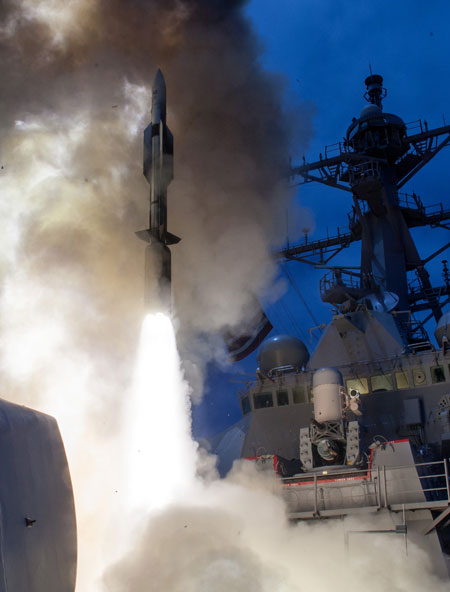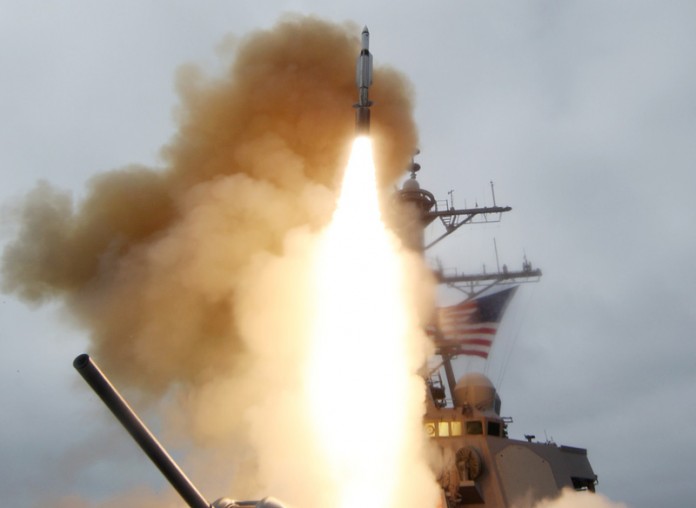
The US Navy Aegis missile destroyer USS John Paul Jones (DDG 53) successfully conducted a flight test yesterday, November 6, 2014 testing the Aegis Ballistic Missile Defense (BMD) system capability to defeat a synchronized raid by nearly simultaneous attacks of ballistic and cruise missiles. The test included three successful near-simultaneous target engagements over the Pacific Ocean.
This scenario represents potential threats expected from countries such as China, North Korea and Iran, possessing anti-ship ballistic missiles (such as China’s Dong-Feng 21 – DF-21) and cruise missiles, capable of attacking naval forces at distances of hundreds of miles from shore.
For this milestone test USS John Paul Jones was equipped with the Aegis Baseline (BL) 9.C1 (BMD 5.0 Capability Upgrade) Weapon System, enabling the Arleigh Burke guided missile destroyers to rapidly switch between BMD and the area air defense role – a capability that proved critical for the tests’ success. As part of the test group, two MQ-9 Reaper unmanned aerial vehicles assisted the intercept, providing target discrimination by airborne sensors.
The key for successful intercepts such as this is simultaneous, multi-mode operation of the radar arrays, signal processors and combat information system, enabling users to monitor their surrounding with high level of confidence and engage multiple targets of different domains coming at the vessel from different trajectories, directions and speed.

















